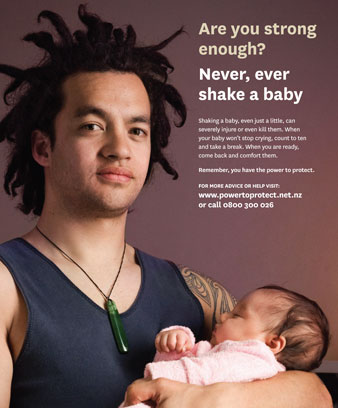Story summary
Child abuse occurs when parents or caregivers use physical violence on children, or sexually or emotionally abuse or neglect them.
Almost half of New Zealand’s abused children are under five years old. In 2019/20, nearly 80,000 cases of child abuse were notified (reported to authorities), and after investigation, 12,800 children and young people were found to have been abused or neglected (1.1% of the population aged under 20). Because of under-reporting, the actual figure is probably much higher.
Between 1989 and 2018, more than 230 children died as a result of physical violence and others died as a result of neglect. The names of many victims became widely known through media reporting.
Although parents and extended family are usually responsible for child abuse, others, including people in schools, foster homes, sports teams, religious communities and communes have also been responsible for abuse and neglect, and for covering it up, sometimes for many years.
State action
In the 19th century, police and the courts did not want to interfere in family life. If children were badly abused, they were sometimes taken from their homes and put in an institution.
From the 1920s it was thought that children should remain in their homes, and parents should be educated to prevent abuse. From the 1970s police, lawyers and medical professionals formed teams to advise social workers about abuse. In 1999 the Department of Child, Youth and Family Services (CYF) was created to look after child welfare.
CYF was replaced by the Ministry for Vulnerable Children (Oranga Tamariki) in April 2017 after experts criticised Child, Youth and Family. This agency became Oranga Tamariki – Ministry for Children on 31 October 2017.
Oranga Tamariki is trying to find new ways of working with other organisations and individuals. It remains the key government agency with responsibility for acting when child abuse is suspected.
The defence of ‘reasonable force’ for the physical punishment of children was removed from legislation in 2007.
The Abuse in Care Royal Commission of Inquiry was set up by the government in 2018 to investigate the historic abuse and neglect of children in state- and church-run institutions such as orphanages. It heard testimony from many survivors of abuse between the 1950s and the 1990s.
Community action
At first, church organisations and women’s groups helped abused children. Plunket nurses who visited homes could report child abuse. From the 1970s, women campaigned to end violence in the home.
From 1989 community groups, iwi and Pacific Island groups had contracts with the government to provide care for children and to assist families.
Programmes such as ‘Alternatives to smacking’ and ‘Never shake a baby’ educated parents and caregivers.
Causes of child abuse
Family members are the most likely to abuse children, and violence and abuse is often passed down in families. Children living in poor families or crowded conditions are at greater risk of abuse.
Children in the care of the state or church-run institutions such as orphanages, those in foster care, Māori and disabled children have been particularly vulnerable to abuse by those in positions of power.
Speaking out
Children often do not speak out about abuse for fear they won’t be believed or their family will be broken up. Since the 1970s, phone helplines have been a way for victims to ask for help.
Many survivors who have tried to speak about what happened to them have been disappointed that no action has been taken by those who should have kept them from harm.




